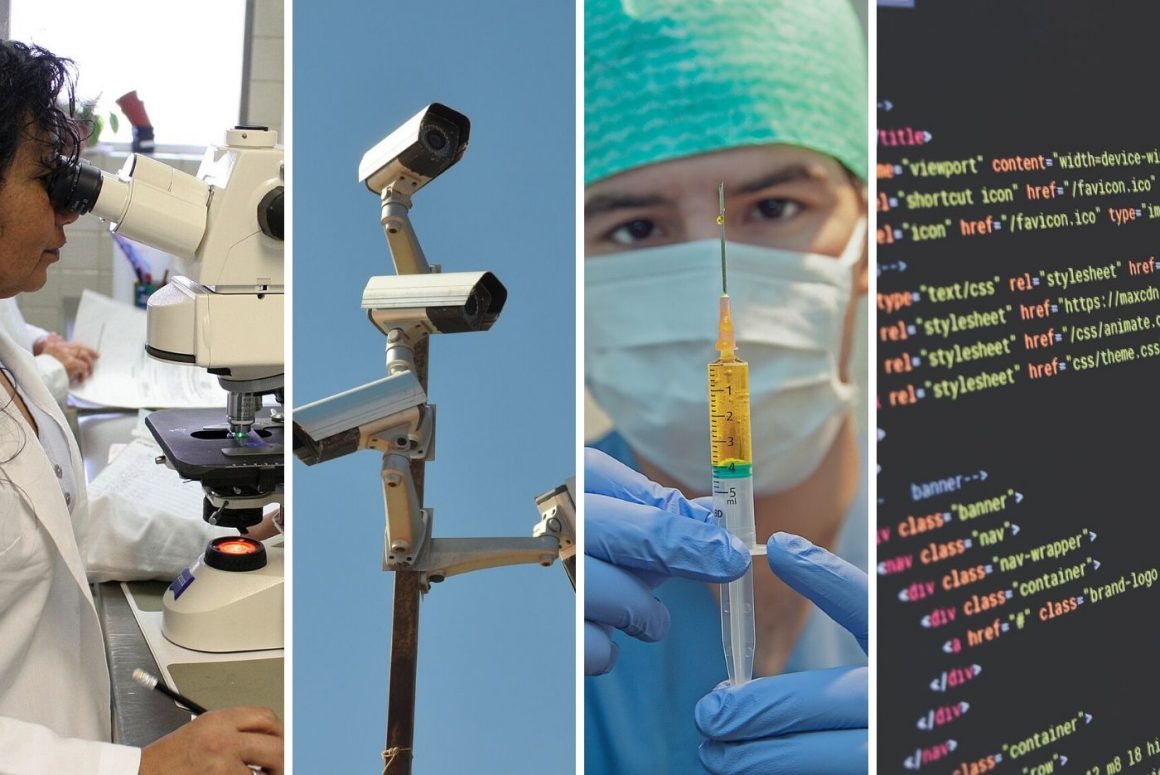
On the role of technology in the COVID-19 pandemic
By Haskirat Grewal, July 8 2020—
As I write this article, there many cases of COVID-19 in Canada and it doesn’t look to be slowing down significantly in the near future. I find myself wondering how different the response against COVID-19 would be if technology was not as advanced as it is today. One of the major roles of technology during this time is awareness and updates regarding the revolving situation. With most people having access to the internet and social media, there has been ample opportunity to keep the public informed as this pandemic goes on. When you switch on the news or open your social media, you are immediately presented with updates on the number of COVID-19 cases and any new potential interventions. Since one of the best ways to help curb the spread is staying home, social media has allowed for this message to be shared all over the world.
Technology is being used for more than just COVID-19 updates as tech companies, researchers and governments work together to create tools that can be used to track, test and treat COVID-19. Recently, the underlying genomic signature for 29 different COVID-19 Ribonucleic acid (RNA) sequences has been identified by researchers at the University of Western Ontario. This is a huge development, because it allows for classification of any newly discovered virus sequence in minutes. This tool will not only be useful for front-line health care workers but also for researchers working on vaccine and drug development.
Research regarding vaccine and drug development has also picked up its pace thanks to advancements in laboratory technology. Vaccine development and technology has intersected in Boston, where HaloVax (joint venture between Hoth Therapeutics and Voltron Therapeutics) and Massachusetts General Hospital’s Vaccine and Immunotherapy Center have entered into a sponsored research agreement. Their vaccine is scheduled to be undergoing animal trials presently, with the next step involving patient testing. This new vaccine is self-assembling and is expected to include a variable component that targets specific characteristics of COVID-19. With the stakes high, researchers are hoping to create a working vaccine that can be administered safely as soon as possible with the use of emerging medical technologies.
The only way to know for sure whether someone has COVID-19 is to conduct a diagnostic test, and the standard way to do that is to use Polymerase Chain Reaction (PCR). PCR directly detects the viral RNA and can tell if someone is sick even before they show symptoms. However, PCR is labor-intensive and requires lab equipment that may not be available in low- and medium-income countries and remote or rural areas. University of Toronto researchers have come up with a “lab-in-a-box.” This portable testing kit has been designed to administer tests on-site and will come with printed training materials and online training videos. This is just one example of how new testing technology is being developed in response to the COVID-19 pandemic.
I have read countless articles outlining new and improved technologies that will help combat the COVID-19 pandemic all over the world, but China’s use of technology showcases how far we have come in this digital age. Some of the advanced technology solutions being used in China right now are positioning technologies, satellite monitoring, robotics, health sensors and apps, drones, facial recognition, artificial intelligence, autonomous vehicles and mobile tracking/mass surveillance. The only drawback these technologies may impose are privacy issues. Concerns surrounding individual privacy and how it will be used by governments and companies to help get rid of the virus and save lives will be raised by many, but only time will tell how we deal with this issue.
As the number of cases rise, many people are hoping for a scientific breakthrough that will help get the world out of this tough phase. I’m comforted by the fact that we are the most intellectual and technologically equipped beings capable of solving this problem and that at the end of all this, we will come out stronger and more knowledgeable.
This article is part of our Opinions section and does not necessarily reflect the views of the Gauntlet’s editorial board.
